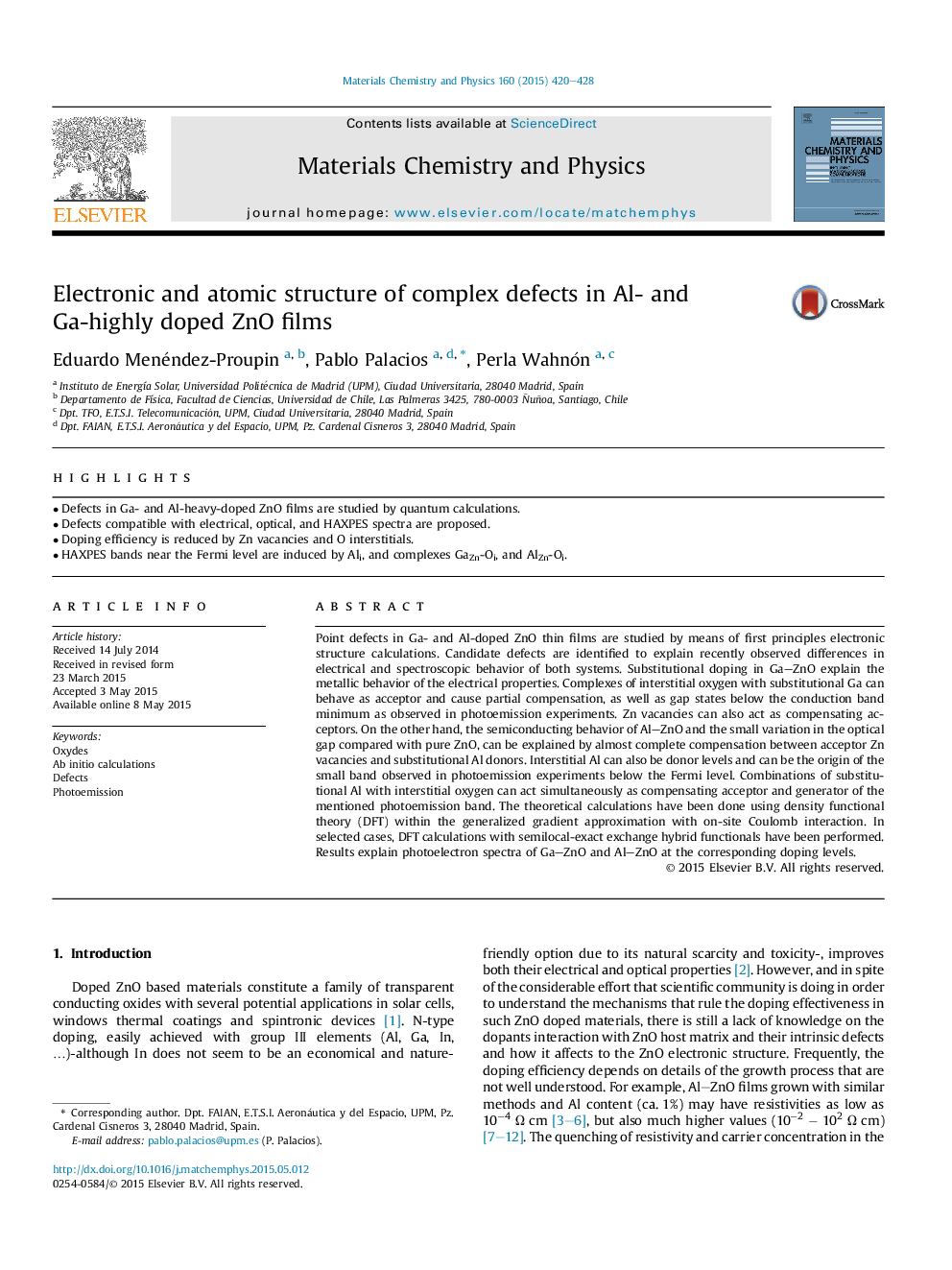| Article ID | Journal | Published Year | Pages | File Type |
|---|---|---|---|---|
| 7923134 | Materials Chemistry and Physics | 2015 | 9 Pages |
Abstract
Point defects in Ga- and Al-doped ZnO thin films are studied by means of first principles electronic structure calculations. Candidate defects are identified to explain recently observed differences in electrical and spectroscopic behavior of both systems. Substitutional doping in Ga-ZnO explain the metallic behavior of the electrical properties. Complexes of interstitial oxygen with substitutional Ga can behave as acceptor and cause partial compensation, as well as gap states below the conduction band minimum as observed in photoemission experiments. Zn vacancies can also act as compensating acceptors. On the other hand, the semiconducting behavior of Al-ZnO and the small variation in the optical gap compared with pure ZnO, can be explained by almost complete compensation between acceptor Zn vacancies and substitutional Al donors. Interstitial Al can also be donor levels and can be the origin of the small band observed in photoemission experiments below the Fermi level. Combinations of substitutional Al with interstitial oxygen can act simultaneously as compensating acceptor and generator of the mentioned photoemission band. The theoretical calculations have been done using density functional theory (DFT) within the generalized gradient approximation with on-site Coulomb interaction. In selected cases, DFT calculations with semilocal-exact exchange hybrid functionals have been performed. Results explain photoelectron spectra of Ga-ZnO and Al-ZnO at the corresponding doping levels.
Related Topics
Physical Sciences and Engineering
Materials Science
Electronic, Optical and Magnetic Materials
Authors
Eduardo Menéndez-Proupin, Pablo Palacios, Perla Wahnón,
